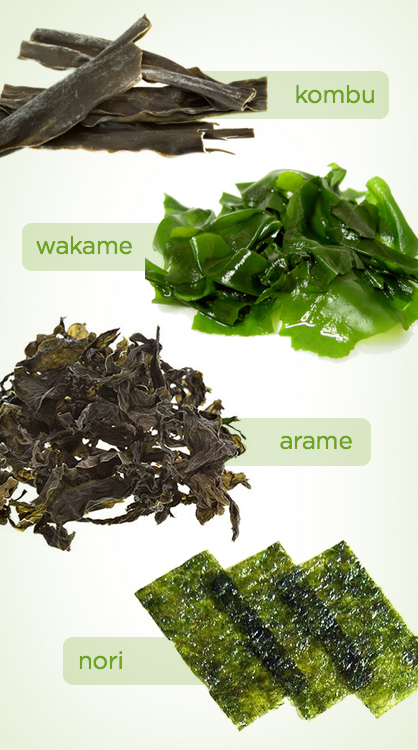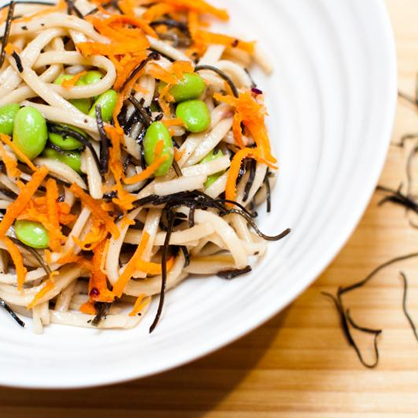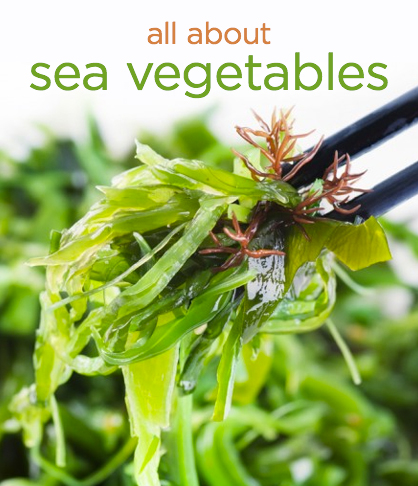Wellness Wednesday: All About Sea Vegetables
For thousands of years, mineral-rich seaweed has been a staple in Asian diets and for good reason. Used more and more in Western culture, it is still a green superfood you’re probably not getting enough of. Packed with vitamins, minerals and antioxidants, read on for more interesting facts, common types of seaweed and recipes you can try tonight!
6 Reasons to Start Eating Seaweed
- Seaweed is pure: After years of using synthetic chemicals, the quality of soil has degraded, which has led to less nutritional food. Seaweed proves to be pure flora that can provide quality nourishment.
- Feeling blue? Eat more seaweed. Through its high vitamin B1 content, seaweed helps combat depression and fatigue.
- A 2010 study found that seaweed can reduce our rate of fat absorption due to its inhibitory effect on a digestive enzyme called lipase.
- Research suggests seaweed can help regulate estrogen and estradiol levels. Responsible for proper development and function of sexual organs, it may also reduce the risk of breast cancer.
- It's great for digestive health: A high seaweed intake helps increase the good bacteria in the gut while strengthening gut mucus.
- Seaweed is a beauty food: Acting as a cosmetic enhancer, seaweed helps strengthen the hair and scalp and maintain high levels of collagen for healthy skin.
Types

Wakame: Often used in salads and seen floating in soups, this slippery seaweed became widely used in the U.S. due to the influence of the macrobiotic movement. Often referred to as “women’s seaweed,” wakame helps prevent bloating by acting as a diuretic and is packed with osteoporosis-preventing calcium and magnesium. It is also one of the few non-animal sources of vitamin B12, so vegetarians take note.
Nori: Most commonly known as the outer wrapping of sushi, nori has been valued as a food for longevity for centuries. As one of the most nutritious forms of seaweed, nori is a great source of iron, calcium, fiber and vitamins A, B and C. It’s also known as a skin superstar for its anti-inflammatory properties and omega-3 content. Just one sheet of nori has the same amount of omega-3s as two whole avocados.
Kombu: Sold dried and pickled, this type of seaweed is used extensively in Japanese cultures to make kombu dashi soup. Valuable for its high iodine content, it helps control metabolism by helping with the production of thyroid hormones. Since our bodies don’t make iodine, it is important to get it from food sources such as kombu. Have you ever tried kombucha tea? The fermented beverage is actually brewed from dried kombu!
Arame: The mild, sweet flavor of arame makes it an adaptable addition to soups, salads, casseroles and many different types of cuisine. Usually sold in a dried form, it is easily reconstituted. Providing a good amount of potassium, arame is a good dietary source for vitamin A, iron, calcium and has antibacterial properties.
Recipes

Raw Wakame Salad: Get your daily dose of greens with this raw wakame salad recipe. Made with zucchini and avocado, ginger and lemon add a detox component to this flavorful side.
Vegetarian Nori Rolls: Step outside the traditional sushi roll and use nori sheets to make nutritious vegetarian rolls. Avocado and hemp mayo add a creamy texture to chopped veggies.
Kombu Dashi Soup: Try the Japanese favorite, kombu dashi soup to warm up on a chilly evening. This recipe uses soba noodles for added substance. Top with sesame oil and shredded nori.
Arame Soba Noodle Salad: As previously mentioned, arame can be used in just about anything! If you’re just get started with seaweed, try this arame soba noodle salad to get acquainted.
Read more Wellness Wednesday
Tagged in: wellness, food, wellness wednesday, recipes, nutrition, health, raw,

LadyLUX



